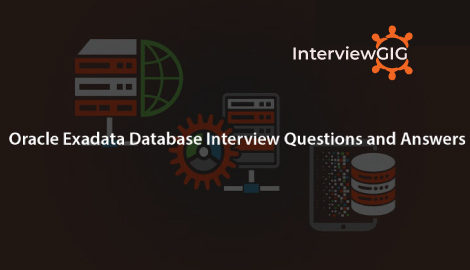What is Business Process Execution Language (BPEL)?
Business Process Execution Language is a language that is executable for interaction specification along with Web services. The processes of BPCL will export and import information by utilizing exclusively web service interfaces.
Explain about BPEL Executable and Abstract Processes?
The exact details of business processes can be specified by executable processes. These can be executed by orchestration engine. An executable process is used in most cases of BPEL.
The public message exchange among parties is only allowed by abstract business process. The internal details of process flows do not include and are not executable.
What is BPMN standard for business process modelling and analysis?
The BPMN specifies a graphical notation for expressing business processes in a Business Process Diagram. Both technical users and business users are supported for business processes using BPMN. BPMN provides a standardized, simple means of process information communication to other business users, customers, suppliers and process implementers.
Define BPEL Orchestration?
The control over the web services that are involved and coordinating the execution of different operations on the web services involved in the operation is taken by the central process in orchestration as per the requirements. The involved web services are unaware of this process. With operations that are explicitly defined and the order of invocation of the web services, the orchestration is centralized.
BPEL vs. workflow foundation
BPEL is process-centric, whereas workflow foundation is human centric.
BPEL web services-based language for business process behaviour which can be used for composite web services, whereas workflow foundation is a programming model for quickly building workflow enabled applications which are user interface-centric.
What is Oracle BPEL Process Manager?
Oracle BPEL Process Manager is a BPEL engine. It is a member of Oracle Fusion middleware family of products. Orchestration disparate applications and web services are enabled enterprises by Oracle BPEL Process Manager. Quick building and deploying this processing ability in a standards-based manner delivers critical functionality for developing SOA.
Explain about BPEL Orchestration and Choreography?
Orchestration: The control over the web services that are involved and coordinating the execution of different operations on the web services involved in the operation is taken by the central process in orchestration as per the requirements. The involved web services are unaware of this process.
With operations that are explicitly defined and the order of invocation of the web services, the orchestration is centralized.
Choreography: Choreography does not rely on a central coordinator. The web services involved in the choreography is aware exactly the execution of its operations and whom to interact with. Choreography is a collaborative effort. It focuses on messages exchange. The awareness of business process, operations to execute, messages to exchange, and the time of message exchange are needed for all participants of choreography.
Describe the BPMN standard for business process modelling and analysis?
The BPMN specifies a graphical notation for expressing business processes in a Business Process Diagram. Both technical users and business users are supported for business processes using BPMN. BPMN provides a standardized, simple means of process information communication to other business users, customers, suppliers and process implementers.
Explain Role of BPEL?
BPEL is a language for relatively simple description of how web services are composed into business processes.
BPEL is the first of its kind. BPEL
- Allows abstract and executable processes
- Gained support by Majority of companies
- Allows software to exist and similar processes can be executed and developed.
Define Business Process Execution Language (BPEL)?
Business Process Execution Language is a language that is executable for interaction specification along with Web services. The processes of BPCL will export and import information by utilizing exclusively web service interfaces.
What kind of different types of business processes BPEL supports?
BPEL supports two different types of business processes:
Executable processes allow us to specify the exact details of business processes. They can be executed by an orchestration engine. In most cases BPEL is used for executable processes.
Abstract business protocols allow us to specify the public message exchange between parties only. They do not include the internal details of process flows and are not executable.
Described the kind of BPEL?
- Allows abstract and executable processes.
- Gained support by Majority of companies.
- Allows software to exist and similar processes can be executed and developed.
Do you know how to wrap Java Code as a SOAP service?
You can wrap the Java code as a SOAP service. This method requires that the Java application have a BPEL-compatible interface. A Java application wrapped as a SOAP service appears as any other web service, which can be used by many different kinds of applications. There are also tools available for writing SOAP wrappers.
Define BPEL Executable process?
The exact details of business processes can be specified by executable processes. These can be executed by orchestration engine. An executable process is used in most cases of BPEL.
Define the Oracle BPEL process manager?
Oracle BPEL Process Manager is a BPEL engine. It is a member of Oracle Fusion middleware family of products. Orchestration disparate applications and web services are enabled enterprises by Oracle BPEL Process Manager. Quick building and deploying this processing ability in a standards-based manner delivers critical functionality for developing SOA.
Define BPEL Abstract process?
The public message exchange among parties is only allowed by abstract business process. The internal details of process flows do not include and are not executable.
What Are Alerts for Stuck Bpel Messages?
An alert is displayed when there are stuck messages for asynchronous BPEL processes. A global time threshold is used identify stuck messages.
Alerts are displayed at multiple levels:
- soa-infra
- Composite
- Flow Trace (PS4)
What Is Inline Fault Handling?
In BPEL processes, invocation of operations on Web services can be particularly error-prone. There are numerous situations—such as broken connections, unavailability of Web services, or changes in the Web services WSDL—that can prevent a BPEL process from successfully invoking a partner Web service operation.
Such faults can be handled in the section of the corresponding scope.
How Can We Use Pick as Initial Activity?
You can use the activity instead of the initial activity. You can specify several operations and receiving one of these messages will result in the creation of a business process instance. Then you have to use a special form of the activity. You specify the createInstance attribute for the activity, but you can specify only events; events are not permitted in this specific form.
To understand the use of this special form of the activity, consider the bookstore Web service, implemented as a simple BPEL process.
What Are Predefined Errors in Bpel?
- Custom errors
- Timed out errors
- BPM errors
- Validation Errors
How Can You Increase Performance in Bpel?
We can increase the performance by writing indexes and sequences. (Or) Go to application server – Configurations – Change Xml file
How Xml Data Works in Bpel?
In a BPEL process, every piece of data is in XML forms. This includes the messages passed to and from the BPEL process, the messages exchanged with external services, and local variables used by the process. You define the types for these messages and variables with the XML schema, usually in the WSDL file for the flow, the WSDL files for the services it invokes, or the XSD file referenced by those WSDL files.
Therefore, all variables in BPEL are XML data, and any BPEL process uses much of its code to manipulate these XML variables. This typically includes performing data transformation between representations required for different services, and local manipulation of data (for example, to combine the results from several service invocations).






